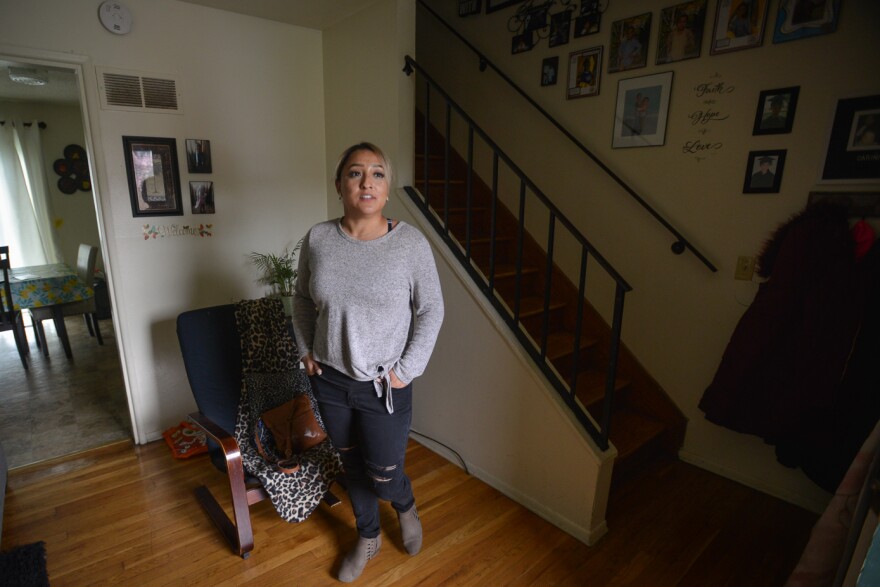In Independence, Missouri, a narrow strip of bright green grass between two small houses marks the boundary between pre- and post-coronavirus lumber prices.
One house is just under a year old; the other is under construction. They are only ten and a half feet apart, but the price gap between them is huge, mostly because of one commodity.
“What lumber has to do with this is about 30 to $35,000 in difference between the two buildings,” says Mark Schroer, Construction Director for Truman Heritage Habitat For Humanity.
Since this time last year, the price of lumber has roughly tripled, and new houses take a lot of lumber. “It's an everyday concern for me,” says Schroer. “It’s every time I call a lumberyard they're telling me about a price increase.”
It’s not just lumber. The price of everything from insulation to PVC pipe to aluminum is up. Factories producing garage doors, windows, and appliances are months behind schedule.
Builders will eat some of the added costs. A nonprofit like Habitat for Humanity can appeal to its partners to help shield buyers from the extra expenses.
But people like Libet Ojeda, a single, working mother slated to buy the house under construction in Independence, feel the weight of the building materials crunch.

“When I heard about it I was terrified to know more because I know that we've are already doing everything we can to save money,” says Ojeda. “And that just meant what else can we cut back? And so more stressors and things that make us nervous and afraid of how it would affect the future home that we'd like to have.”
The extra expenses are adding up. Ojeda’s house, for instance, is months behind schedule. In the meantime, she’ll be paying rent instead of building wealth with a home mortgage.
Property values also are climbing fast, so she’ll face a much steeper tax burden than she was counting on. And she will have to wait to fence in the yard for her two children.
Wealthier home buyers are suffering too. Will Ruder, the executive vice president of the Greater Kansas City Home Builders Association, says that for every $1,000 increase in the price of a house, more than 150,000 potential buyers are being priced out of the market nationwide.
“So, when we’re talking about 20 to 25,000 dollar increases in lumber, extrapolate that to the number of families that are going to find themselves on the outside, looking in from a new home construction standpoint,” says Ruder.
And that is exactly what is happening. In February sales of new, single-family homes plummeted 18%, despite enormous demand for houses. And at the same time, new housing starts dipped by 10%.
The record-breaking cold snap and grid meltdown in Texas contributed to the decline in housing starts, but Stockton Williams, executive director of the National Council of State Housing Agencies, says construction prices have been mounting for years.
Williams says fewer homes in the pipeline is especially bad news for lower-income people. He says that high-end residential construction keeps coming because there’s good money to be made selling to wealthy buyers. “But for folks in the middle, and certainly for lower-income workers, those essential workers that we've all grown to appreciate even more during the past year, there's just not enough housing,” says Williams.
A shortage of building materials is just one factor, according to Williams. He says land for lower-income housing is also scarce, and local zoning codes often forbid building it.
Williams notes President Joe Biden’s infrastructure proposal includes more than $200 billion to build or rehab housing, and it also encourages communities to ease zoning restrictions.
Of course, that kind of aid will come too late for this year’s buyers like Libet Ojeda. Still, there are hopeful signs that construction material prices will start to ease before long.
Lumber production is now higher than it’s been in years, and the logistics bottlenecks holding up other housing components should work themselves out within the next few months.



